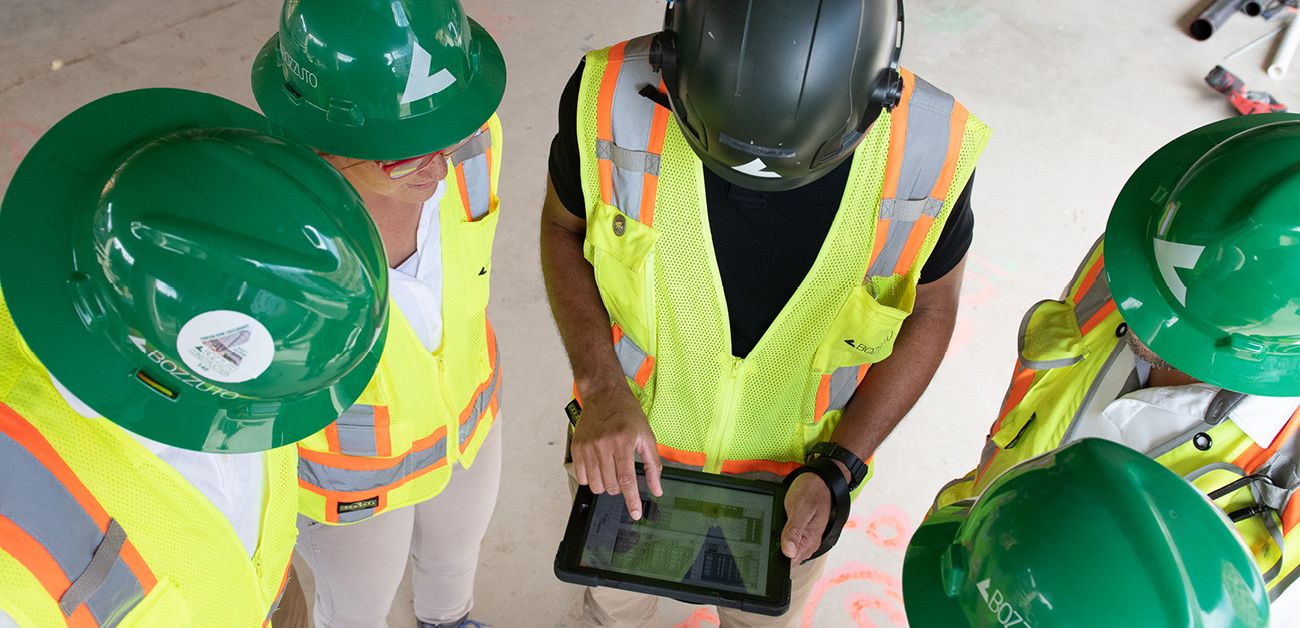The Washington Business Journal
The D.C.-area Construction Business Took Another Hit in 2021
By: Tristan Navera, Staff Reporter
The construction business rebounded in 2021, proving an economic windfall as the industry started its recovery from Covid-19. In just about every metro area but Greater Washington, that is.
This region is one of just a few of the largest American metros to record a second year of construction slowdowns in 2021, according to Dodge Data & Analytics, which tracks the business. A total of $8.4 billion in new construction started in the region during the year, which is 9% below 2020 levels — when it recorded $9.2 billion in construction starts, and 29% below the levels in 2019, when $11.8 billion in construction kicked off here.
Dodge pinned the decline firmly on the slowdown of the office and retail market. Commercial construction starts dropped 18% in the metro, Dodge noted, because fewer office and warehouse buildings started construction, even as the region saw a small uptick in starts of new hotels and parking structures. The largest commercial construction starts were data centers, including the $450 million Sterling 144 MW EdgeCore data center and the $225 million Vantage data center.
The pandemic’s impact on office vacancy hit markets with lots of office space particularly hard. Of the 20 largest U.S. metros, Washington joined only Chicago, L.A. and Nashville, Tennessee, in seeing construction starts fall in 2021. Overall, Dodge found the 10 biggest U.S. cities had a combined 18% boost in construction from 2020 to 2021, while all of the country posted a 16% construction boom to the tune of $236.6 billion in new construction.
Dodge suggested the cities where numbers fell are getting hit disproportionately by the trend toward suburbanization that is slowing urban commercial development — in addition to what Dodge Chief Economist Richard Branch noted was a host of other issues that show the industry is not yet fully recovered from Covid-19. The drag in this area has larger implications, because the top 10 metros account for 39% of all construction started in the country.
“Higher material prices, labor shortages, and multiple waves of Covid infections threatened to dampen the recovery,” Branch said in a statement. “While these challenges will remain in 2022, the industry is well-positioned to make further gains fed by a growing pipeline of nonresidential projects waiting to break ground and the infusion of money directed towards infrastructure.”
Greater Washington did see a 1% increase in multifamily starts last year, thanks in part to the high cost of single-family housing. Among the big projects kicked off were the $267 million 1900 Crystal and 1851 S. Bell South & North residences, the $230 million Mather Senior Living Community and the $290 million Upton Place mixed-use project at 4000 Wisconsin Ave. NW.
Branch predicted a more even recovery for the construction industry in 2022 but noted rising materials and labor costs would continue to drag business down. Local developers see similar headwinds in the short term, but they’re far from worried.
“I think we look at the region in a larger continuum,” said Toby Bozzuto, CEO of Greenbelt’s the Bozzuto Group, which boasts $1billion in new construction either in planning or development. He noted that 2021 saw some plans delayed or slow down, especially because developers were more cautious about building new buildings unless they had a committed anchor tenant. So there could be “pent up” construction demand.
“We track progress in years, not quarters,” Bozzuto said.
Adrian Washington is more cautious too, but not bearish. His Neighborhood Development Co. builds multifamily and smaller commercial projects, and he sees more demand for retail projects he’s been building in D.C. neighborhoods. Multifamily development, he reasons, just means more building outside of the central business district, which will be its own boom.
“Retail is poised for a post-pandemic boom, because some of the weaker competition has been weeded out by the pandemic,” Washington said. “Brick-and-mortar retail is still a favored class, especially if people are spending more time in their neighborhoods during work-from-home.”

